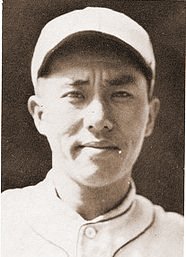BARBED WIRE BASEBALL: How One Man Brought Hope to the Japanese Internment Camps of WWII
By Marissa Moss, 2013
These illustrations by Yuko Shimizu for the picture book Barbed Wire Baseball tell part of the incredible story of Kenichi Zenimura (January 25, 1900 – November 13, 1968) a Japanese-American baseball player, manager, and promoter. He had a long career with semiprofessional Japanese-American baseball leagues in the western United States and Hawaii; these leagues were very active and popular from about 1900 to 1941. He is also noted for the successful barnstorming tours he organized that brought famed players such as Babe Ruth and Lou Gehrig to the west coast and to Japan for exhibition games in the 1920s and 1930s.
Yuko’s book focuses on the specific time in Kenichi’s life when, during World War II, he was incarcerated with his family in an internment camp along with most Japanese-Americans living on the west coast of the United States. Their camp was the Gila River War Relocation Center in Arizona.
While there, with support from the camp director Leroy Bennett, Zenimura built a baseball field, spectator stands and established a 32-team league for the internees. These leagues were important both to the morale of the internees and in building relationships with nearby Arizona residents.
With the closing of Butte Camp at Gila River, Zenimura field officially closed on November 10, 1945, and Zenimura went on to a long, acclaimed baseball career.
Additional Zenimura biographical & baseball facts:
Zenimura was born January 25, 1900, in Hiroshima, Japan and his family moved to Honolulu, Hawaii shortly afterwards. He first played baseball at Mid-Pacific Institute, formerly the Mills Institute for Boys. In 1920 he moved to Fresno, where he played baseball on Japanese-American and previously all-white teams.
Many baseball historians believe he earned his titles for his remarkable career as a player (he excelled at all nine positions), manager (of Japanese-American league teams and European American teams in the Twilight leagues for older players), and international ambassador of the game (he led tours to Japan in 1924, 1927 and 1937).
In addition to organizing barnstorming tours to Japan, Zenimura was instrumental in the negotiations that led to Babe Ruth's visit to Japan in 1934. Several years earlier, in 1927, Zenimura also helped arrange a barnstorming tour to Japan for the Negro-league All-Star Philadelphia Royal Giants, led by Hall of Famers Biz Mackey and Andy Cooper.
Zenimura returned to Fresno, California, and continued to play competitive ball until the age of 55. In the early-to-mid-1950s, Zenimura was instrumental in negotiating the professional baseball contracts of several Japanese-American players in the Central League and Pacific League including contracts for Satoshi "Fibber" Hirayama and his own sons Howard Kenso Zenimura and Harvey Kenshi Zenimura. The three later played in Japan for the Hiroshima Carp baseball team.
Kenichi Zenimura continued to manage until his death in an automobile accident on November 13, 1968, in Fresno, California.
He is the subject of the 2004 documentary Diamonds in the Rough: Zeni and the Legacy of Japanese-American Baseball; the documentary includes on-screen commentary by Pat Morita, a noted actor who had also been incarcerated at the Gila River camp during World War II and the 2007 fictional film American Pastime (2007) about baseball in the Topaz Internment Camp was inspired by Zenimura's experience.
Zenimura was inducted into the Baseball Reliquary's Shrine of the Eternals in 2006 and he is honored with a plaque at Cooperstown Baseball Hall of Fame, designated as the "Father of Japanese American Baseball.“


